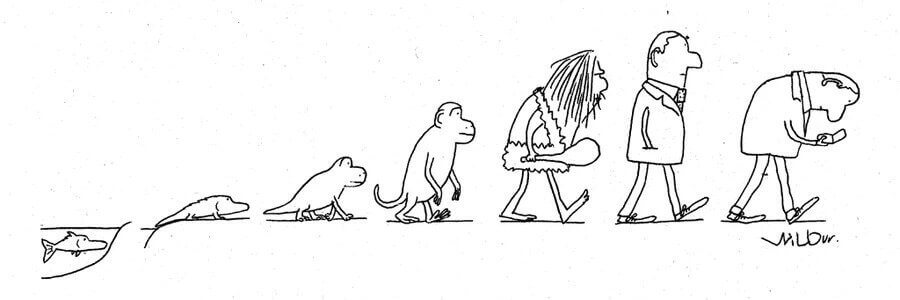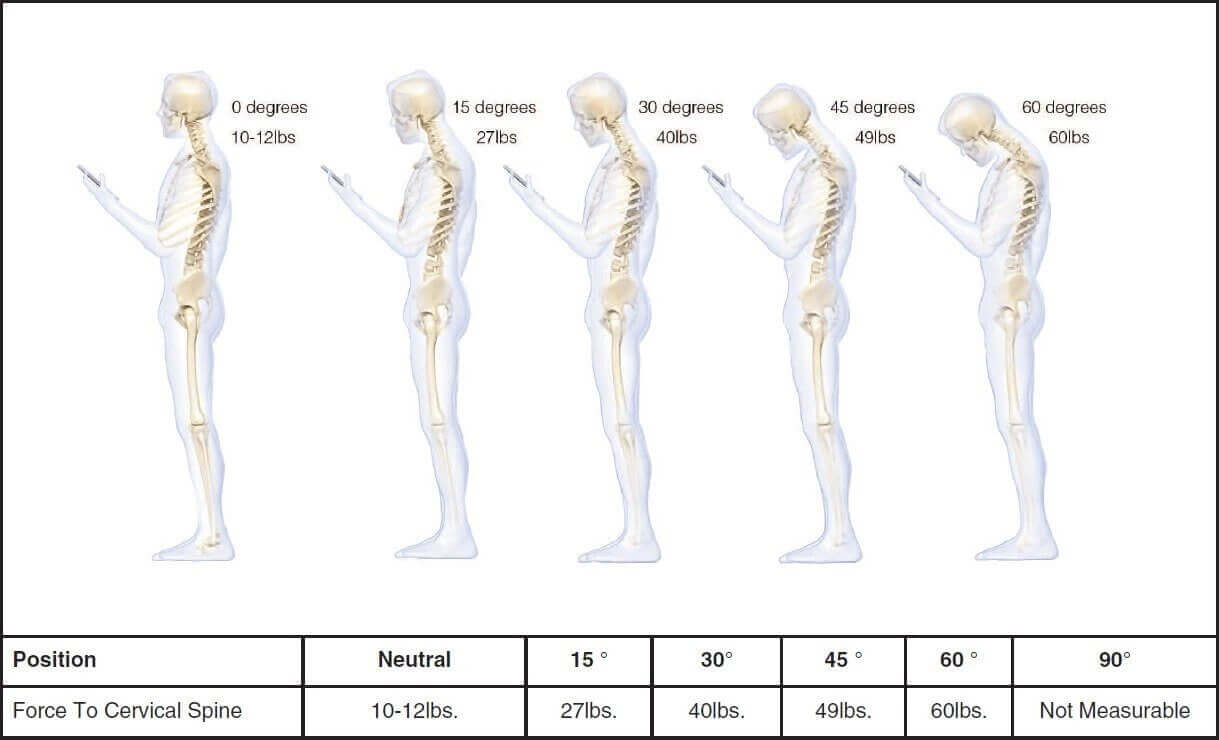Candy Crushers, Instagramers… beware!

After millions and millions of years of evolution and natural selection, our bodies were becoming really well adapted to the challenges and tasks of the physical world we live in but, then, came technology and the office-based work, looking at a screen for hours… every day.
More recently, even the computer seems to start to be ditched of our lives, as many things we use it for can be accessed anytime and anywhere just by reaching for our smartphones. Whether we are waiting for an appointment, commuting or even, sometimes, socialising, we can become up to date with what is happening in the world just by having a quick peak at these “small” screens. Sometimes, though, this peak is not that quick and we get absorbed by it and spend a few hours a day looking at it, 2 to 4 hours, apparently, according to the study of Dr. Hansraj (2014).1
What’s the impact on our necks of looking down at the smartphone for long periods?
On his interesting study, Dr. Hansraj has developed an algorithm that calculates how much weight goes through our cervical spine (neck), depending on the angle in which we hold our heads when looking down. He starts by saying that, on average a human head weights between 10-12 lbs which is the weight held by the neck in a straight position. However, as the angle of the head increases, the load through the neck in increased due to the system through which our body holds our head up as shown by Figure 2, below. We can see that if held at an angle of 60 degrees, the head weight will be equivalent to having a 60 lbs head (about 5x times the weight it actually has).

Lordosis – The Curvature Of Neck
Apart from that, there is an influence, this position has on our intervertebral discs. You see, the neck when still, is meant to have a curvature backwards (not forwards) that we call “lordosis”. As we change this natural posture and loading process, the change in the mechanism of load and pressure in the discs in our neck can lead to a disc pathology, such as a bulge or herniation which will pinch the spinal cord or a nerve and trigger tingling and numbness symptoms down the arms, pretty much like an “Arm Sciatica” and these may be so disabling that one may need surgery to manage the condition, as also pinpointed by Dr Hansraj.
Is my neck that weak and fragile?

This information, should NOT, however, cause panic! Our neck is a very efficient and resilient system and our bodies have strategies and mechanisms to cope with changes in load! We just need to think about how some cultures regularly transport weights on their heads, doing so with a STRAIGHT neck (figure 3).
A review of the properties of the neck by DeWit (2012)2, showed that the cervical spine discs fail when loaded with about 288 lbs and this is is in a model without the muscles component to stabilise. However, it is crucial to understand that the SPEED at which they are loaded, the FREQUENCY of the loading and especially the TIME for which the discs are loaded are all factors that need to be considered and may lead to disc pathology well before it is loaded with 288 lbs.
Conclusion
What we mean is that pain or discomfort shouldn’t put you off exercising because APPROPRIATE exercise has been shown to always lead to better outcomes than rest and lack of movement, as long as you do it sensibly. If the pain is just too significant and you need some help to get to the level where you can start exercising or simply need some guidance of which exercises would be better for you, a physiotherapist will be happy to assist you.
The bottom line is that, keeping ourselves fit by doing regular exercise and being mindful of our postures at work or when using devices will help keeping a healthy and strong neck. We should also try to look into moderating the usage of smartphones or tablets, finding alternative hobbies or interests and, probably, going back to a normal desktop computer setting to do some of the things we now do on the smartphone screen.
On a different note, even laptops are not as good as normal desk-based computers. The problem is that the keyboard is attached to the screen, meaning that you will either have the neck looking down to keep your arms and shoulders in a good posture or your shoulders and arms up in a bad posture, in order to keep your neck straight. They are still better than smartphones, though!
References:
- Hansraj KK, (2014), Assessment of Stresses in the Cervical Spine Caused by Posture and Position of the Head, Surgical Technology International, Neuro and Spine Surgery, New York.
- Dewit J. A., Cronin D. S. Cervical spine segment finite element model for traumatic injury prediction. Journal of the Mechanical Behavior of Biomedical Materials. 2012;10(10):138–150. doi: 10.1016/j.jmbbm.2012.02.015
